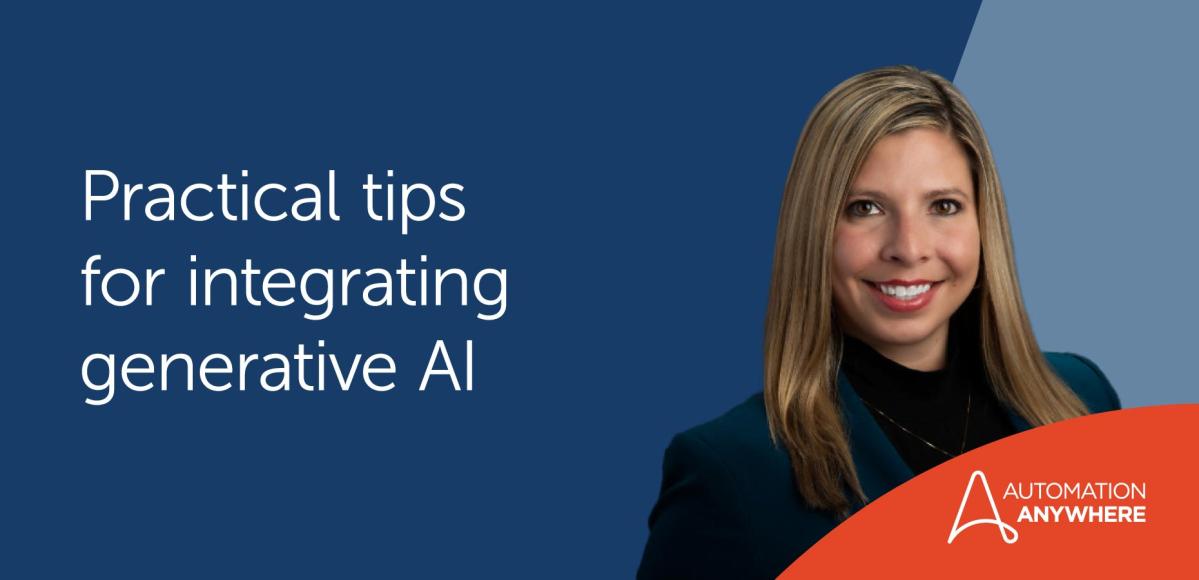- Login
- Support

-
Have a question? Our team is here to help guide you on your automation journey.
-
Browse documentation on how to install, configure, and use our products effectively.
-
Explore support plans designed to match your business requirements.
-
- Search
- Products
Powered By
Automation Success Platform Create a system of work with our connected suite of intelligent automation apps and tools to discover, automate, scale and engage. Explore our Platform Explore our Platform
- Discover
- Automate
- Scale
- Engage
- Solutions
Featured Solution
Google Cloud Google Cloud and Automation Anywhere empower enterprises to fast-track their RPA journey Google Cloud
Featured Solution
 Amazon Web Services Streamline workflows, reduce costs, and make automating even easier when you combine the Automation Success Platform with AWS Amazon Web Services
Amazon Web Services Streamline workflows, reduce costs, and make automating even easier when you combine the Automation Success Platform with AWS Amazon Web Services- Automation Solutions
Accelerate your business with a digital workforce
- By Industry
- By Function
- By Technology
- Resources
Get Community Edition: Start automating instantly with FREE access to full-featured automation with Cloud Community Edition.
Featured
 Now & Next: State of Intelligent Automation Report Learn how automation leaders are embracing Intelligent Automation & generative AI for increased productivity, innovation & growth. Download Report Download Report
Now & Next: State of Intelligent Automation Report Learn how automation leaders are embracing Intelligent Automation & generative AI for increased productivity, innovation & growth. Download Report Download Report - Customers
Featured case study
 Leading Broker-dealer Osaic Transforms Business Through Intelligent Automation. Explore case study Explore case study
Leading Broker-dealer Osaic Transforms Business Through Intelligent Automation. Explore case study Explore case study - Company
Get in touch with us Get help, know more, learn, ask questions, or just say Hi! Contact Us Contact Us
- Get To Know Us
- Announcements
- Society
Blog
Empowering the Future: Leveraging Automation and Generative AI with Cognizant
Share this:

In a recent conversation with Mariesa Coughanour, Head of Advisory for the Automation Practice at Cognizant, we gained valuable insights into the world of automation and artificial intelligence (AI). With a career spanning both startups and global giants like GE, Mariesa brings a wealth of experience to the table. Read on and experience our interview, where we explore the challenges and strategies in implementing automation and AI, along with a focus on successful launch strategies.
In a hurry? Here are the five key takeaways from Mariesa for companies looking to leverage automation and generative AI:
- Start with lower-risk areas: Begin your automation and generative AI journey by implementing it in areas with lower sensitivity or risk. This phased approach allows organizations to learn, gain confidence, and build momentum without exposing critical functions to potential learning curve issues.
- Prioritize data quality: Address data issues and prioritize data quality when integrating automation and generative AI. Recognize that data is a challenge for most organizations, and consider strategies to source the right data and ensure its reliability. This will improve your outcomes while building quality back into your core data centers.
- Embrace technology awareness: Acknowledge that work methods will evolve due to automation and AI, and this doesn't necessarily mean job loss. Companies should promote technology awareness and upskilling among employees. The future workforce will likely involve a combination of human and digital workers.
- Security and privacy: Maintain a strong focus on information security and data privacy when integrating automation and AI technologies. Implement robust controls and safeguards to protect sensitive data.
- Diverse skill sets: Encourage a diverse range of roles within the organization. Not everyone needs to be a developer. Instead, organizations should value specialists alongside individuals with broader skills, creating a well-rounded workforce capable of leveraging various tools to achieve objectives.
Employing the power of generative AI
How is Cognizant assisting clients in adopting generative AI?
Mariesa: We have multiple teams and a task force dedicated to this, making it a top priority. Our primary focus is leveraging generative AI to drive actionable outcomes and value. While acquiring insights is crucial, the real impact comes when we translate those insights into faster business operations and innovative experiences. This is our core focus, enabling our teams to create results and drive actions within the organization.
Where are companies starting to explore generative AI?
Mariesa: Companies are traditionally starting in areas like back-office functions for efficiency gains. However, generative AI is becoming more accessible to the masses. It's now commonly used, often on personal computers, to assist with various tasks. This accessibility has led to its adoption in traditionally harder-to-automate areas, such as front-office operations, sales, and marketing. Marketers, for example, are using it to craft compelling messaging and refine content. Communication and contact center teams are leveraging for sentiment analysis. In essence, generative AI can be applied across roles and departments within any organization.
“We’re seeing functions embracing generative AI that were traditionally harder to scope for automation opportunities. Generative AI can be applied to any role, any space within an organization.
In our 2023 Automation Now & Next report, 80% of respondents emphasized the importance of automation and AI in achieving their goals. Does this align with your perspective?
Mariesa: Absolutely, there's tremendous enthusiasm surrounding these technologies. Even my parents are curious about generative AI, whereas describing my daily work often results in puzzled expressions. Generative AI is more approachable because it provides tangible benefits that people can understand through examples and direct interaction. It's user-friendly and practical, which contributes to its rapid adoption. However, there's a need for organizations to understand that deploying this technology involves complexities and intentional planning.
Once introduced into an organization, numerous considerations arise, including information security and data challenges. Data issues are ubiquitous across companies, irrespective of size. Implementing generative AI can exacerbate these problems by revealing data gaps and trust issues. Organizations must address data quality and sourcing to make the most of this technology.
Additionally, data privacy and security require careful planning, necessitating the establishment of appropriate safeguards. Considerations will also need to be made to enable the full potential of AI, both in leveraging company data and outside sources. While addressing sensitive data concerns, organizations must empower their teams quickly and efficiently without causing frustration. This is the opportune moment for adoption.
“I think there's a lot of excitement but also some misunderstanding and a lot of not wanting to be left behind.
Responsible use of AI
Can you share some success stories from companies that have effectively organized their data while ensuring security?
Mariesa: One approach is to start by enabling generative AI in less sensitive, lower risk areas. For instance, industries dealing with sensitive data like clinical trial records or financials require much more planning and care when implementing new technologies. Beginning in less risky spaces allows organizations to learn and gain confidence in the technology without exposing highly sensitive, regulated information. This phased approach encourages adoption and paves the way for broader implementation.
We are also helping clients in enhancing their master data management through the strategic utilization of automation and generative AI, while creating user-friendly interfaces for business users. These interfaces empower users to review data and options, verify data accuracy, and suggest necessary clean-up—adding an additional layer of hands-on knowledge and security.
For example, an HR team that employed these methodologies to assess payroll codes. As the organization expanded globally and acquired new businesses, the removal of inactive codes did not keep pace. This approach not only streamlines the master data management process through the implementation of generative AI but also actively engages business partners in ensuring data quality.
While we all need to ensure ethical and responsible use of AI, we should look for ways to apply it in spite of potential challenges, as it can deliver improved data quality, faster processes and ultimately more impactful results.
How can organizations effectively integrate their proprietary data into LLMs to enhance decision-making and operations?
Mariesa: When working with proprietary data and LLMs, intentional planning is paramount. Implement additional controls and restrict access. Even within development teams, ensure segregation of duties where appropriate, especially regarding development and access to production environments. Similar to automation, you need to apply safeguards. While clients are contemplating this integration, they remain cautious due to the sensitivity of the data. It's entirely feasible, but it necessitates a different approach and the establishment of robust guardrails.
“Even with automation, people are very cautious when you get into proprietary information. It's not that you can't do it, but you have to think about it a bit differently. And you have to put the right guardrails in. People need to feel enabled, but risk also needs to be mitigated.
Are there concerns among people about these technologies potentially taking over their jobs in the future?
Mariesa: Surprisingly, with generative AI there isn't as much fear once people understand it. Instead, most concerns revolve around security. Leaders worry about the possibility of unauthorized information sharing. People seem eager to embrace these technologies. In the realm of automation and AI, it's important to acknowledge that work methods will evolve over time. The way we work today won't be the same in the coming decade, just as it has changed in the past. While roles may be impacted, it doesn't necessarily mean job loss. Rather, it signifies a shift in how we work. I firmly believe that future hiring and career paths will incorporate technology awareness. Not everyone needs to become a developer, but understanding how technology affects your role and potentially having "digital workers" on your team will become more commonplace. Honesty about these changes is crucial, but overall, the fear factor isn't as prominent in this context.
Empowering problem-solvers
What are other key considerations for enterprises looking to scale their automation programs?
Mariesa: Whether it's generative AI, automation, or analytics, empowering individuals to address challenges within their roles and teams is essential. Reflecting on my time at GE, where I began my career, Lean was prevalent. Not everyone needed to be an expert, but everyone had foundational knowledge. Not everyone should become a developer; organizations require diverse roles, including sales and HR. Encouraging everyone to be a developer may not be the ideal approach, but everyone understanding how they could leverage technology and how to be engaged is essential. We need specialists alongside those with broader skills; it's about having a versatile toolkit to achieve the desired outcomes—no one-size-fits-all solution.
Thank you, Mariesa, for sharing your expertise and insights with us. Your contributions are greatly appreciated, and they will undoubtedly guide organizations on their path to harnessing the full potential of generative AI.
Embracing generative AI's potential can lead to innovative problem-solving, streamlined operations, and enhanced customer engagement. It's a journey that organizations should embark on with caution but also with an open mind to the possibilities that lie ahead in this tech-empowered future.
For those looking to utilize generative AI today, check out our how-to guides for building generative AI-powered automation. Take the first step toward harnessing the power of generative AI for your organization's growth and efficiency
About Mariesa Coughanour

Mariesa is the Head of Advisory for the Automation Practice at Cognizant.
Subscribe via EmailView All Posts LinkedInGet to know the Automation Success Platform.

For Students & Developers
Start your RPA journey instantly with FREE access to Community Edition



